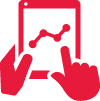What's Next for Employee Mobility?
How to Address the Tax and People Challenges of Remote and Hybrid Work Arrangements
The way we work, where we work and even why we work has been forever altered. Organizations are grappling with how and when to bring their workforces back into physical offices, and many are adopting flexible work arrangements rather than returning to the pre-pandemic status quo. Attracting and retaining talent means, in some instances, agreeing to non-traditional remote working arrangements that can have individuals working anywhere from Alaska to Zimbabwe. This new flexibility results in many challenges for corporate tax, legal, payroll and HR teams as they strive to develop policies and procedures that mitigate and quantify risk consistent with overall business goals.
Each country—and even many large cities within those countries—is in a different phase of recovery. While mobility may look different depending on location, mobility is here to stay and will continue to evolve. Businesses must act now to address the opportunities and challenges that come with managing a mobile workforce.
What's Next For Work?
A Guide to the Future of Where, How and Why We Work
Are You Prepared for the Future of Mobility?
If you’re unsure how remote workers may create tax and payroll compliance problems for your business, read through the Employee Mobility Risk Assessment below.
If your response to any of these questions is “no,” BDO can help.
![]()
Do you have a way to track the location of remote workers?


![]() Are you aware of your compliance obligations with regard to deferred incentive compensation, such as global equity?
Are you aware of your compliance obligations with regard to deferred incentive compensation, such as global equity?
Contact Us
Thank you for contacting BDO. A representative will be in touch shortly.
SHARE